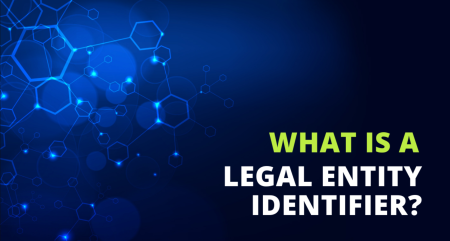Have you ever heard of Usenet? This fascinating realm of the internet holds a rich history and a treasure trove of information. Yet, for various reasons, Usenet remains largely undiscovered and unkwnon, especially by new generations.
In this blog post, we will delve into the mysteries of Usenet, exploring its technology, sharing interesting facts, and revealing how to unblock this hidden gem.
1. The Origins of Usenet.
Usenet emerged in the late 1970s as a pioneering form of online communication. Created by graduate students at Duke University, Tom Truscott and Jim Ellis, Usenet was originally intended to facilitate discussions and information sharing. Usenet started as a decentralized network of newsgroups, serving primarily academic communities. But it quickly expanded to attract a diverse userbase. Its resilient architecture allowed thousands of servers to connect and host newsgroups covering a wide array of topics.
Despite the rise of social media and modern communication tools, Usenet has curiously stood the test of time. Usenet continues to adapt to the evolving digital landscape while preserving its core principles of global discussion and knowledge exchange.
As one of the oldest forms of online communication, Usenet is still a cherished platform (and by a large extent). It exemplifies the enduring power of collaborative networks and the value they bring to fostering meaningful online interactions and file sharing. Starting with Usenet in 2023 is a still quite easy and straightforward process.
2. The Inner Workings of Usenet.
At the heart of Usenet lies its decentralized network infrastructure. Thousands of servers are distributed globally, forming the backbone of Usenet. This decentralized architecture ensures redundancy and resilience, as information is replicated and spread across multiple servers.
Users access Usenet through newsreaders or clients, specialized software applications that connect to Usenet servers. Newsreaders provide an interface for users to browse newsgroups, read messages, post replies, and download files.
To facilitate the exchange of messages and files, Usenet servers rely on the Network News Transfer Protocol (NNTP). NNTP serves as the backbone protocol of Usenet. When a user posts a message or file to a newsgroup, it is propagated through the network of servers using this protocol. This ensures that the message or file becomes available to users worldwide.
The combination of decentralized servers, newsreaders, and the NNTP protocol forms the intricate workings of Usenet. This unique infrastructure allows users to participate in discussions, share information, and access a vast array of content.
3. The Advantages of Usenet:
Usenet offers users a reliable and versatile platform for content sharing and communication. With its unique features and benefits, Usenet has become a popular choice among individuals seeking a rich and diverse online experience. Let’s explore the advantages that make Usenet stand out:
- High-speed Downloads: Usenet’s dedicated network ensures lightning-fast download speeds, allowing users to retrieve content quickly and efficiently.
- Vast Content Archives: Usenet hosts an extensive collection of text discussions, multimedia files, software, and more, providing users with access to a vast range of content.
- Enhanced Security: Usenet’s decentralized structure and secure connections offer users a heightened level of privacy and anonymity, protecting their online activities from prying eyes.
- Efficient Infrastructure: Usenet operates on its dedicated network, optimizing data transfer between servers and users for a seamless and reliable experience.
- Knowledge Sharing: Usenet’s newsgroups provide users with a platform for engaging in informative and enlightening discussions on various topics of interest.
- User Confidentiality: Usenet’s decentralized architecture and secure connections safeguard user privacy, ensuring a protected online environment.
- Trustworthy Platform: Usenet remains a dependable and adaptable space for content sharing and communication, offering users a reliable resource for their online interactions.
By harnessing these advantages, Usenet continues to provide users with an enriching and dynamic online environment that fosters knowledge exchange, content discovery, and secure communication.
4. The Power of Indexers:
Usenet indexers play a crucial role in unlocking the vast potential of Usenet. They act as the Googles or Bings, search engines for Usenet content. These specialized platforms index Usenet newsgroups, which allows users to search and discover their topics, discussions, and files. These indexers provide a user-friendly interface and powerful search capabilities. Such capabilities simplify the process of finding relevant content within the expansive Usenet ecosystem.
Users can rely on Usenet indexers to navigate the vast collection of newsgroups and access specific discussions or files with ease. Just like Google, these indexers employ sophisticated algorithms to crawl and index Usenet, enabling users to perform targeted searches based on keywords, file types, or specific newsgroups.
Popular Usenet indexers such as NZBGeek, Binsearch, and NZBPlanet have gained recognition for their comprehensive indexes and user-friendly features. They are excellent examples of indexers helping users discover valuable content within Usenet’s vast repository.
5. NZB Files and Downloading:
NZB files play a vital role in simplifying the process of downloading content from Usenet. These small metadata files contain essential information about specific posts within Usenet, such as the post’s subject, sender, newsgroup, and segment details. Anyone can search for and obtain NZB files from Usenet indexers.
Once a user obtains an NZB file, they can open it in a Usenet client (such as SABnzbd) or a dedicated download manager. The NZB file acts as a guide. It provides the necessary instructions to the client or download manager for retrieving the corresponding content from Usenet servers. This streamlined approach eliminates the need to manually search for individual articles and simplifies the download process.
By leveraging NZB files, you can efficiently download files from Usenet with ease and precision. Using Usenet indexers, NZB files, and Usenet clients correctly, will empower you to navigate the vast Usenet landscape. You’ll find the desired content and retrieve it swiftly and securely.
6. Conclusion
Usenet is a hidden world waiting to be explored. It holds a wealth of knowledge, discussions, and digital treasures. By understanding the technology behind Usenet, utilizing indexers, grasping the role of servers and clients, and knowing how to unlock the mysteries, you can embark on an exciting journey into this lesser-known corner of the internet.
Embrace the power of Usenet and discover a whole new dimension of information and connectivity.
Happy Usenetting!














